Estimated reading time 17 minutes, 22 seconds.
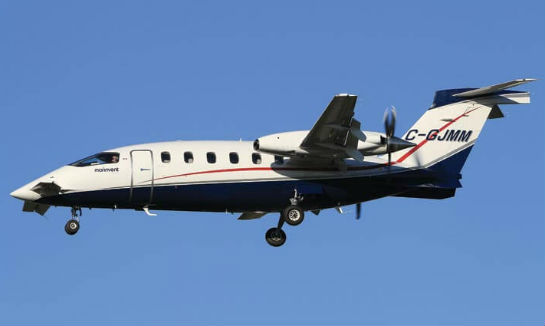
With an advanced avionics suite that in some respects exceeds the capabilities of modern airliners, Marinvent’s Piaggio P-180 Avanti can handle airliner testing and certification work because of its speed and its 41,000-foot service ceiling. Michael Durning Photo
John Maris has always been a problem solver. A pilot with more than 6,000 hours of military and civilian flying, his résumé is a lengthy summary of impressive qualifications. After 12 years in the Royal Canadian Air Force, where he served as a test pilot on several programs, Maris went on to work at the Canadian Space Agency on the Space Station’s Canadarm2 program, before becoming a Transport Canada Design Approval Representative (DAR) test pilot and flight analyst. His company has more than 50 certifications to its credit and has conducted four major NASA flight test programs.
Maris earned an aeronautical engineering degree at Imperial College, London, followed by two subsequent degrees at Florida’s Embry-Riddle Aeronautical University, where he is currently a PhD candidate in the Aviation Human Factors and Safety doctoral program. Throughout his career, he has always been cognizant of the need to reduce risk when bringing aeronautical products or intellectual property to market.
In 1983, the same year he joined the Canadian Department of National Defence, Maris founded Marinvent. The company, based just outside Montreal in St. Bruno, Que., was dedicated to the reduction of risk in the aeronautical environment through the provision of aerospace training, services and consulting.
Now in its 33rd year, Marinvent’s professional team of 12 remains focused on that mission. Phil Cole, the company’s vice president of business development, summed it up this way: “Flight tests, certification, and evaluation programs are risky. They’re expensive, they take a long time, and as an industry, we’re perversely averse to risk. We’re here to help reduce it.”
The company’s first big success came in the 1990s, with the invention of the two fundamental underlying software technologies for the electronic depiction of aeronautical charts. The intellectual property (IP) was licensed to well-known chart-maker Jeppesen Sanderson, which was itself subsequently purchased by The Boeing Company in 2000. Boeing then bought the exclusive rights to the Marinvent technology in 2002, paving the way for Jeppesen’s introduction of the first commercial electronic flight bag (EFB).
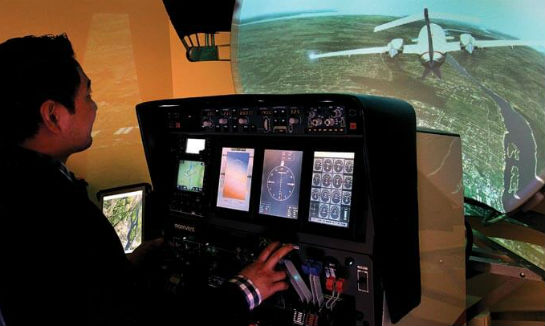
Systems engineer Puthy Soupin operates the Marinvent simulator, which is based at Montreal’s Concordia University. Jean Levasseur Photo
This work led to Marinvent being presented with an Aviation Week Laureate Award, as well as the 2003 Canadian American Business Council Achievement Award, which was jointly presented to Marinvent and Jeppesen. In 2005, Maris himself was awarded the Trans-Canada (McKee) Trophy, Canada’s oldest aerospace award, based on his contribution to these programs.
The IP sale allowed Marinvent to acquire a twin turboprop Piper Cheyenne, followed by a Piaggio P-180 Avanti flight test aircraft in 2003, while also subsidizing a number of the company’s research and development projects.
“For many years, Marinvent didn’t have to focus so much on generating revenue,” said Cole. “John was able to pursue his passion for invention. Predominantly, his areas of focus are aerodynamics and human factors, with emphasis on improved crew situational awareness and safety. His PhD dissertation examines aircraft incidents and accidents related to aircraft stalls and loss of control in icing conditions.”
Independent innovation
Today, Marinvent delivers a full suite of aeronautical services, helping customers see projects through from concept to product launch. Its team provides consulting, training, tools, and IP, to smooth the complicated process associated with a program or product release.
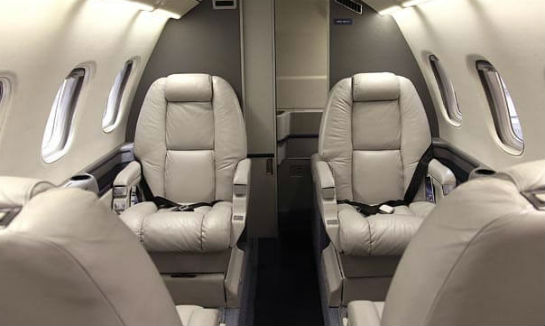
Most of the Avanti’s annual flight time comes from private charters. It is the world’s fastest turboprop business aircraft. Jean Levasseur Photo
Cole explained that Canada is the only Western country still offering independent certification. “That’s not true in the U.S. anymore—U.S. companies have to self-certify. In Europe, it’s all done by the authority,” said Cole. “So customers come to us asking us to certify their avionics, and then they use bilateral agreements to get FAA and EASA [certification] at the same time.”
Avionics certification is one of Marinvent’s specialties. The company offers “come as you are” services to manufacturers who wish to flight test and certify avionics equipment, with the P-180 proving to be a versatile flying test bed.
Valued in excess of $5 million, the Avanti’s airframe may be 15 years old, but its installed systems and capabilities are cutting edge. With a cruise speed approaching 0.65 Mach at 28,000 feet and a service ceiling of 41,000 feet, the pressurized twin turboprop offers a maximum endurance of about four hours and a range of 1,200 nautical miles. It is single-pilot certified for known icing conditions, and can carry a test crew of seven.
Climb inside the Avanti and it’s immediately evident that, although this aircraft is often used for executive charters, it can also be reconfigured into a multi-purpose workhorse. A removable flight test work station resides in the aft cabin, ready to host just about any kind of software for testing. The powerful computer is interfaced with the aircraft’s systems, with a second computer also available for parallel testing or data collection. Each is equipped with ARINC 429 busses, the data transfer standard for aircraft avionics.
According to Marie-Hélène Larose, a Marinvent engineer who demonstrated the work station when Skies toured the Avanti, the system has even been used to test unmanned aerial vehicle ground control station (UAV GCS) software, allowing for the software to actually “fly” the aircraft.
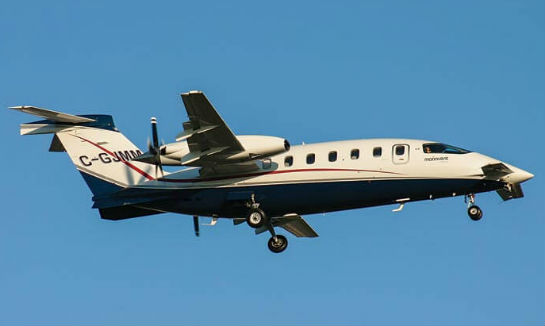
The P-180 is billed as an environmentally friendly aircraft, with a fuel burn that is reportedly 40 per cent less than equivalently-sized jets. Mathieu Pouliot Photo
“Our work station can show you what’s happening in real time, record most of the busses in the ARINC 429 avionics standard, and be replayed and reanalyzed in the laboratory,” said Larose. “It also supports up to six cameras, including two in the cockpit, one at the flight test station, two external cameras, and one floater. With these capabilities, we can offer a complete package with all test data, including video, from a flight.”
The work station is also connected to one of the multi-functional display screens in the co-pilot’s seat, so that the monitor viewed up front is the same as in the back. Synthetic vision can also be employed to simulate flight in other parts of the world, even though the aircraft is in fact over Montreal.
Meanwhile, testing does not affect the Avanti’s normal certificate of airworthiness because the pilot in the left seat operates autonomously, with their avionics and aircraft systems fully firewalled—another Marinvent innovation.
“The left seat is completely separate, has triple-redundant systems, and is wired independently,” said Larose. “But the right seat can be controlled through the work station. That’s why this aircraft is always secure and always certified, because every level of security is always there. Even when the work station is sitting here, we are still certified. Everything is made redundant and secure. If something happens during testing, the pilot simply hits one button and everything will revert to the normal two-crew configuration.”
Add in the complete Honeywell EPIC Phase IV cockpit, satellite and Wi-Fi connectivity, and ADS-B In and Out, and it’s clear why organizations such as NASA have chosen to work with Marinvent and its U.S. joint venture company, Advanced Aerospace Solutions (AdvAero) of Raleigh, N.C.
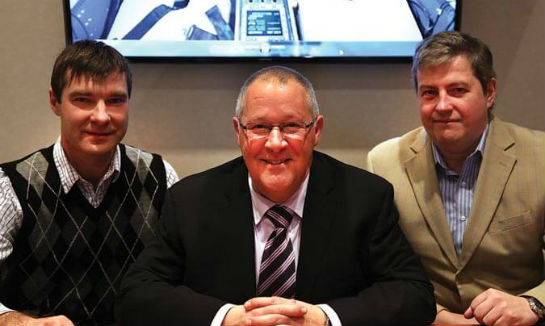
From left to right are Marinvent’s Andrey Uspenskiy, software developer; Phil Cole, VP, Business Development; and Anatoly Titov, senior software developer. Jean Levasseur Photo
“With NASA, we had engineers sitting in the back, testing their application with real live ARINC data feed from the front,” said Larose. The space agency was working to develop its Traffic Aware Strategic Aircrew Requests (TASAR) analysis tool, which is an application designed to choose the most time- and fuel-efficient route for a flight. Once complete, TASAR is expected to be introduced into regular operations with two airlines that are currently working with NASA.
For its part in the TASAR testing, Marinvent—under AdvAero—was chosen to receive NASA’s 2014 Agency Small Business Subcontractor of the Year Award.
Cole said Marinvent’s Avanti test bed offers more realistic test results than a simulator alone. “You can get really immersed in terms of what you expose your technology to, such as traffic, weather and other conditions,” he said. “We want this to basically be a blank sheet of paper that our customers can play with. If they have something to test, they can come here.”
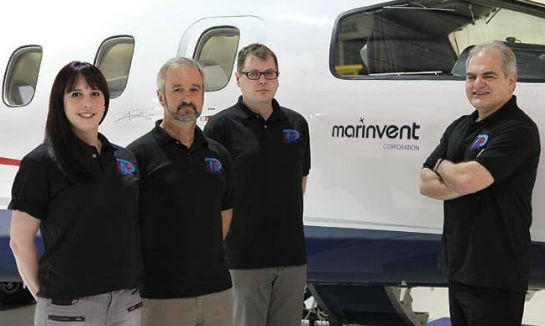
Marinvent’s team numbers 12 people in all. Here, from left to right, are Marie-Hélène Larose, software engineer; Eric Cardon, Piaggio Avanti captain; Ludovic Laberge, hardware engineer; and John Maris, president. Jean Levasseur Photo
With an advanced avionics suite that in some respects exceeds the capabilities of modern airliners, the Avanti—which is based at Trudeau International Airport—can handle airliner testing and certification work because of its speed and its 41,000-foot service ceiling. “It allows you to do airliner work in an aircraft that’s not an airliner,” said Cole. “It has a lovely overlap in a like environment at a fraction of the cost.”
The Avanti flies about 200 hours a year, with the vast majority of that coming from charter flights that help offset some of the aircraft’s operating costs.
Test flights are also complemented by sessions in Marinvent’s research simulator, which is located at Concordia University.
Other offerings
In addition to flight testing, Marinvent offers a host of others services to its customer base, which includes OEMs, integrators, tier one and two suppliers, and governments.
“We do certification work, where customers can outsource complete turnkey certification projects to us,” explained Cole. “Or, if they’re short of a particular resource, they can have us in to help them out during that phase. We can also be the independent auditors of third-party suppliers or their own processes. And, we’ve done a lot of complex aerospace consulting in terms of finding the causes of issues.”
As an example, Cole recounts the time when the Royal New Zealand Air Force had its P-3 Orion fleet grounded for an extended period. “They hired us. We identified the problem for them in a couple of months, and they had us negotiate with the suppliers to fix the problem,” he said. “Since then, we’ve had six successive contracts with the Royal New Zealand Air Force.”
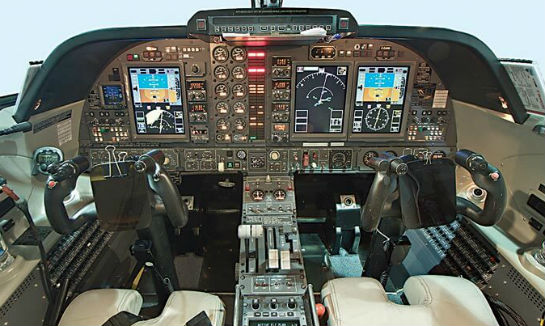
The Avanti is equipped with the complete Honeywell EPIC Phase IV cockpit, with satellite and Wi-Fi connectivity, and ADS-B In and Out. Marinvent Photo
In 2011, the New Zealand Ministry of Defence awarded Marinvent its Category B Award of Excellence to Industry, in recognition of the Canadian company’s support of New Zealand’s C-130 Life Extension Program and the P-3 Systems Upgrade project.
The Marinvent team works closer to home, too, as consultants for Public Services and Procurement Canada (PSPC), formerly known as Public Works and Government Services Canada.
“They [PSPC] have started to use us as independent consultants when looking at new Crown acquisitions,” noted Cole. “The first project we did with them was the Canadian Coast Guard light helicopter procurement (initiated in 2012). They asked us to help with the RFP; we assisted with designing an objective flight evaluation plan for each aircraft being considered.”
Marinvent subsequently went on to be the independent flight test director of the light helicopter evaluations, before moving on to assist with the medium helicopter program and then the simulator request for proposal (RFP).
Cole said the experience was extremely positive, because the same procurement team stayed with it from start to finish. “It was properly planned and budgeted, with all funding awarded up front. Start to finish, it was a shining example of the way projects should be run,” he commented.
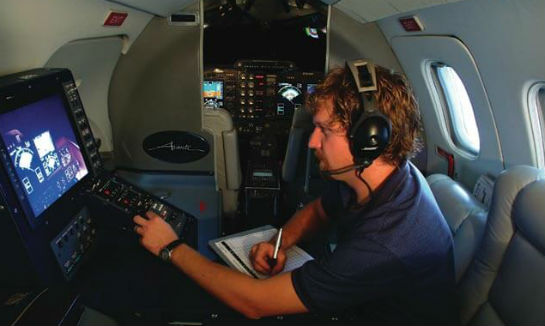
The removable workstation in the Avanti is connected to one of the multi-functional display screens in the co-pilot’s seat, so that the monitor viewed up front is the same as in the back. Marinvent Photo
Sometimes, Marinvent’s engineering team will coach customers through the certification process if they haven’t done it before. The company has fixed- and rotary-wing experts as well as unmanned aerial vehicle specialists.
“We do a lot of different things, and perhaps that’s a bit of a problem. If you have one thing to sell, it’s easy to sharpen your message. But with us, we talk to a customer and we want to first understand what they need, to see if we can help them,” said Cole.
To streamline its own work and improve efficiencies, the company developed proprietary software tools to help plan, manage and optimize the certification programs it was running for customers. Trademarked under the name Synthesis, that software may now be licensed by other companies who are looking for a customizable framework to help guide them through the forest of certification. Cole said Synthesis could represent a solid revenue source moving forward, because it can be adapted to a number of industries.
Canadian content
With annual revenues averaging $3 million, Marinvent is striving to get its share of the Canadian aerospace pie. One of the most positive changes in recent years has been the implementation of the federal government’s new Defence Procurement Strategy (DPS), which, among other things, requires prime contractors to declare their Canadian content value (CCV) at the bid stage.
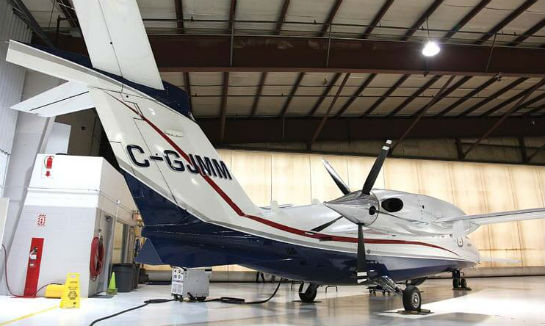
Marinvent’s Phil Cole said the Avanti test bed offers more realistic results than a simulator alone. Jean Levasseur Photo
“We have one of the highest Canadian content values, so it makes us a target for the big OEMs bidding on fixed-wing search and rescue (FWSAR), or the JUSTAS unmanned surveillance acquisition program, etc. We’re an obvious choice to bump up Canadian content,” said Cole.
He added that prior to the DPS, Marinvent did little business in Canada except for being involved in training Bombardier’s C Series flight test engineers, and filling the aforementioned role with PSPC on the Coast Guard programs. Since the DPS, however, Marinvent has been actively pursued by many foreign primes and tier one suppliers because of its CCV, and this is resulting in a significant increase in its Canadian business.
“We’ve done more than 50 certifications with the folks at Transport Canada, in fixed- and rotary-wing,” said Cole. “It makes us one of those little companies that few people have heard of, but the people who have worked with us tend to come back.”
He added that once Canadian certification is achieved, it’s a fairly simple process to achieve subsequent approval from U.S. and European regulators. It is this fact that leads some foreign customers to Marinvent’s door, to initiate the independent certification process.
Growth and partnership
As Marinvent has grown, it has become obvious that it’s now time to separate the certification side of the business from the research and development (R&D) arm.
“We’re establishing the Independent Certification Centre, which will focus on flight testing and certification in general,” explained Cole. “That’s taking shape now and will likely be located at Mirabel Airport. It will be completely separate from our IP R&D business. So, in future, we can work with Public Works as well as others.”
Looking ahead, Marinvent has three primary areas of focus. First, it will be trying to attract investment in the certification side of its business. Cole said there is a real need for independent certification services in Canada and around the world.
Second, the company is a huge proponent of developing a Canadian small business aerospace consortium.
“We’ve been touting the consortium idea for a long time. Now, it’s been formally adopted by AIAC, since John (Maris) is now the chair,” explained Cole. “We’ve been putting together our own consortium for a while; it’s one of the reasons we partner with the universities. We want to see projects put through this model, with it expanded to include pre-finance through BDC [the Business Development Bank of Canada], etc.”
Cole said that the collaborative model would make it much easier for customers to negotiate a single contract for a large scope of high-value work, with all the members operating together as one.
Finally, he added, “Our third focus is to grow our defence business to roughly 50 per cent of revenues [from the current 25 per cent], so it would be the same size as our commercial business. Often, a peak on one side will coincide with a trough on the other.”
Like many other small Canadian aerospace companies, Marinvent is changing with the times as it looks for new customer revenue streams. Cole believes there is only so much time left to re-affirm Canada’s place of prominence in the global aerospace industry.
“We can’t outsource our IP,” he said emphatically. “We need to figure out what Canada is good at, and use our expertise instead of relying solely on commodities. What is our new role? Technologists, innovators? I’d say we’ve got until 2020, and not much longer, to capitalize on the opportunities out there.”
He is, however, encouraged that recent industry reports from David Emerson and Tom Jenkins have identified areas of industry weakness and suggested ways to move forward. Collaboration is one of those recommendations.
“I do hope there is the wherewithal to follow through on implementing those solutions,” concluded Cole.

